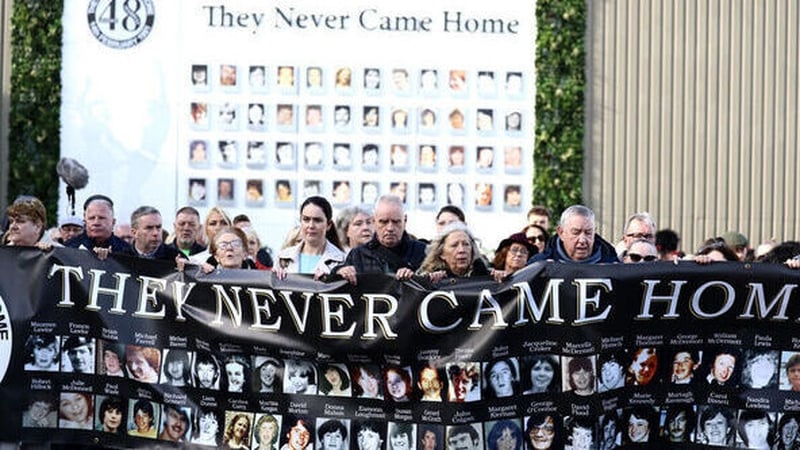Verdicts of unlawful killing have been returned at the inquests into the deaths of 48 people who died in the 1981 fire at the Stardust nightclub in Dublin.
The jury found the fire started in the hot press in the main bar and was caused by an electrical fault.
The jury could not say exactly when the fire began, but found the blaze was first seen outside the building between 1.20am and 1.40am.
They found that the fire was first seen inside the ballroom between 1.35am and 1.40am.
The jury found that polyeurthane used at the nightclub, the ceiling tiles and the height of the ceiling in the west alcove all contributed to the fire.
A number of factors were found to have contributed to the difficulty of the crowd leaving the nightclub, including the failure of the lighting, the lack of staff preparedness and lack of visibility.
The jury found that exits were locked, chained or otherwise obstructed.
They found that the victims were impeded in their ability to access exits and get through them.
These factors caused and contributed to the deaths of the victims, the jury found.
It is clear that the Stardust disaster claimed many more victims than the 48 who perished in its fire.
That evidence painted a particularly bleak picture of how the families, desperate to hear word of their missing loved ones, drove around the empty streets to the city’s hospitals hoping, praying that their son or daughter, brother or sister had survived.
Those despairing journeys would eventually lead to the Dublin City Morgue, which the inquests heard, was overrun with bodies.
The survivors too spoke of the screams coming from those trapped inside, they were shouting for the lives.
Joseph Cumiskey described how he tried to break the windows outside on the front of the building with a hammer in an effort to get people out but could not do so because of the bars across them.
Through tearful testimony, he said: “There was nothing I could have done.”
The inquests also heard how steel plates were welded to the inside of the toilet windows in the weeks before the fire.
The fact that the architects who designed the Stardust nightclub had “little or no knowledge of fire safety” combined with the lack of a sounding fire alarm and exits being obstructed or locked “contributed to the loss of life” on the night of the fire, an expert witness has told an inquest jury.
He said that there was a fire alarm on the premises, but it only sent a signal to the management office and did not sound to the patrons. He said this was done at the insistence of Dublin Corporation in order to avoid panic but added that this would have delayed evacuation.
Mr Davidson said that at the Stardust, most of the patrons did not know there was a serious situation until the screens went up at the partitioned-off area where the fire was first observed.
He said that fire regulations make the assumption that there is a good standard of fire safety management in a building, but there was no training for the staff, who were not aware of what to do in the event of a fire.
More than 90 days of evidence and testimony from 373 witnesses was heard at the inquiry into the deaths of 48 people, aged 16 to 27, in a fire in the north Dublin ballroom in the early hours of 14th February 1981.



